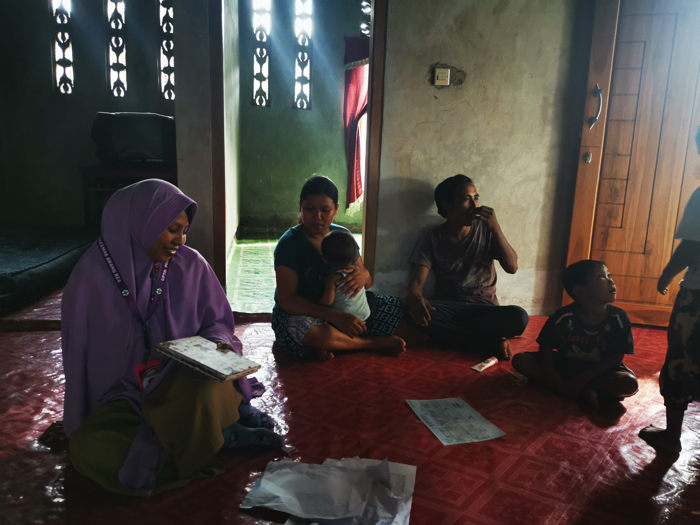- Project Leader : Tatsuno Mai (Kyoto University, Graduate School of Medicine)
- Collaborators : Kato Emiko (Kyoto University, Graduate School of Medicine)
- : Sakamoto Ryota (Kyoto University, Center of Southeast Asian Studies)
- : Harada Koji (Kyoto University, Graduate School of Medicine)
- : Ardiana Ekawanti (University of Mataram, Medical Faculty)
- : Hamsu Kadriyan (University of Mataram, Medical Faculty)
- : Seto Priyambodo (University of Mataram, Medical Faculty)
- : I Gede Putu Wirawan (Udayana University, Faculty of Agriculture)
Outline of Research
Since 2013, the number of reported cases of malformed babies and disabled children in Brang Rea subdistrict of Sumbawa Barat Regency in Nusa Tenggra Barat Province, Indonesia has been rising. In Sumbawa Barat, mercury is used in the process of gold purification in Artisanal Small Gold Mining (ASGM) operations.
This study will investigate the prevalence and symptoms of malformed babies and disabled children during the past 10 years in Sumbawa Barat Regency. The methylmercury levels in the hair and umbilical cords of subjects in both ASGM and non-ASGM areas will be measured and compared. These investigations will reveal whether and to what extent malformed babies and disabled children exist in ASGM compared to non-ASGM areas, and whether such cases are related to methylmercury poisoning.
Description
The objective of this study is to assess the prevalence of malformation and disability among babies and children in Sumbawa Barat Regency and its relationship with ASGM activity, especially methylmercury exposure.
The following hypotheses will be tested:
1. The prevalence of malformed babies and disabled children is significantly higher in areas of ASGM operations than in non-ASGM areas in Sumbawa Barat.
2. The levels of methylmercury at ASGM sites in Sumbawa Barat are critically high.
If these hypotheses prove to be true, we can assume that the high rate is related to methylmercury exposure from ASGM operations.
Regarding malformed babies and disabled children in this area, detailed information of symptoms and prevalence is unclear. However, resi- dents are concerned about the negative impacts of ASGM activity. We are going to clarify the situation by investigating the prevalence and characteristics of symptoms, and evaluate them from an epidemiological perspective.
Although it is a common understanding that ASGM-related health problems are mainly caused by inorganic mercury, its effects on childbirth have not been well understood. Although it is known that methylmercury poisoning has serious effects on fetuses, especially on neurological development, any major local methylmercury pollution around ASGM sites has yet to be proven. However, inorganic mercury can be methylated by environmental micro-organisms and aquatic organisms, and thus methylmercury pollution can occur if a large amount of inorganic mercury is distributed, accumulated, and concentrated.
If a critical level of methylmercury is detected, we can suggest countermeasures against methylmercury poisoning to prevent further damage. If we find that methylmercury levels are not significant and therefore not affecting the rates of malformation and disability, we will take it as an important finding to determine the causal substances, which will inform future studies. It is therefore important to examine the possibility and extent of methylmercury pollution through this study.


